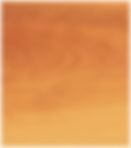









Yellow Birch
Betula spp
Range
Yellow birch grows in the Lake States, New England, New York, New Jersey, Pennsylvania, and along the Appalachian Mountains into southern Georgia. It reaches its best development near the Canadian border. Sweet birch grows in New England, New York, New Jersey, and Pennsylvania andextends southward along the Appalachian Mountains to northern Georgia and Alabama. Paper birch has a transcontinental range extending throughout Canada to Alaska. In the U.S., it occurs eastward from the Lake States to New York and New England.
Uses
Yellow birch is one of the principal furniture woods in the U.S. because of its good machining and finishing properties, hardness, pleasing figure and attractive color. Sweet birch lumber and veneer also are used in furniture. Both species are also used in kitchen cabinets and architectural trim, paneling, and cabinetry.
Characteristics
The wood of yellow and sweet birch is relatively heavy, hard, and strong and has high shock resistance. Although the wood is difficult to work with handtools, it can be readily shaped by machine and ranks high in nail-withdrawal resistance. Sweet birch ranks slightly above yellow birch in most strength properties. The wood of paper birch is considerably lighter than the other two birches and ranks below them in hardness, strength, and stiffness. All birches shrink considerably during drying. Yellow birch must be seasoned carefully to prevent checking and warping. Eleven to15 days are required to dry 1-inch lumber from the green condition to 6 percent moisture content. Because yellow and sweet birch are difficult to glue, special veneer and adhesive treatments are usually required to obtain the best results. They're glued more easily with synthetic-resin glues than with natural glues.
(RS Boone, State University of New York College of Environmental Science and Forestry)
Below are examples of different finishes

